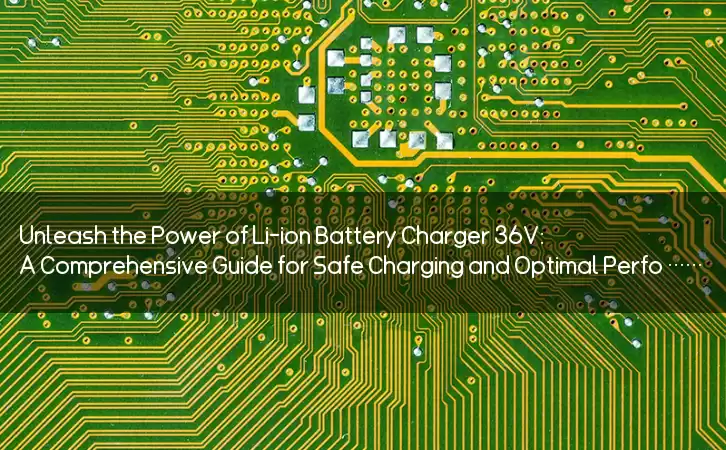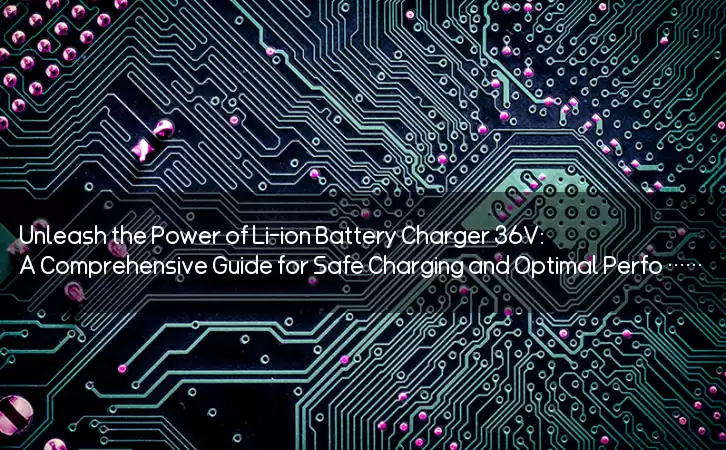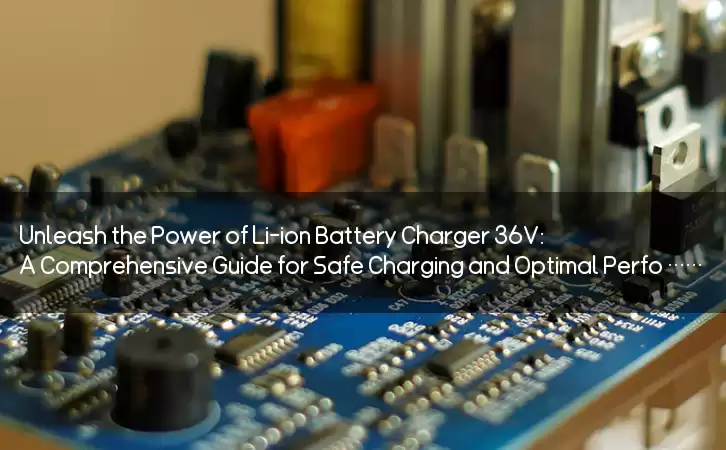Information Center
Unleash the Power of Li-ion Battery Charger 36V: A Comprehensive Guide for Safe Charging and Optimal Performance
Published:2023-06-20 00:33:03 Author:Green WCND Views:59Li-ion Battery Charger 36V: A Comprehensive Guide for Users

As the world moves towards a cleaner and more sustainable future, the use of electric vehicles is becoming increasingly popular. One of the most important components in an electric vehicle is the battery, which requires a reliable and efficient charger to keep it properly functioning. In this article, we’ll be discussing all you need to know about li-ion battery chargers 36V – their features, types, charging methods, and safety measures.

Features of Li-ion Battery Chargers 36V

A li-ion battery charger 36V is a type of charger designed specifically for li-ion (lithium-ion) batteries that have a voltage of 36V. Li-ion batteries are commonly used in electric bikes, electric scooters, and other small electric vehicles. A typical li-ion battery charger 36V has the following features:
1. Automatic Charging: Li-ion battery chargers 36V are designed to automatically detect the charging state of the battery and adjust the charging current accordingly.
2. Safety Features: A good li-ion battery charger 36V has built-in safety features such as overcharge protection, short circuit protection, and over-current protection.
3. Compact Size: Li-ion battery chargers 36V are usually small and lightweight, making them easy to carry around.
Types of Li-ion Battery Chargers 36V
There are two main types of li-ion battery chargers 36V – the standard charger and the fast charger.
1. Standard Charger: The standard li-ion battery charger 36V takes longer to charge the battery but is more reliable and safer. It charges the battery slowly and steadily, ensuring that it doesn’t overcharge or overheat.
2. Fast Charger: The fast li-ion battery charger 36V charges the battery much faster than the standard charger but can sometimes be risky. It charges the battery at a higher rate, which can damage the battery if not used properly.
Charging Methods for Li-ion Battery Chargers 36V
There are two main charging methods for li-ion battery chargers 36V:
1. CC-CV Charging: CC-CV charging stands for Constant Current – Constant Voltage charging. In this method, the charger first applies a constant current to the battery until it reaches its maximum charge capacity. Once it reaches the maximum capacity, the charger switches to a constant voltage mode, where the voltage remains constant until the battery is fully charged.
2. Trickle Charging: Trickle charging is a slow charging method that is used for li-ion batteries that have a very low charge level. It involves charging the battery at a very low rate until it reaches a certain minimum voltage level. Once it reaches the minimum voltage, the charger switches to the CC-CV charging method.
Safety Measures for Li-ion Battery Chargers 36V
Using a li-ion battery charger comes with some safety risks that need to be taken seriously. Here are some safety measures to keep in mind when using a li-ion battery charger 36V:
1. Do not overcharge the battery: Overcharging a li-ion battery can damage it and lead to overheating or even an explosion. Always ensure that you use a reliable charger with built-in overcharge protection.
2. Keep the charger away from water: Water can damage the charger and increase the risk of electrocution.
3. Use the right charger: Using the wrong charger can damage the battery, cause overheating, or even lead to an explosion. Always ensure that you use the charger that is designed for your battery.
4. Avoid charging the battery in extreme temperatures: Charging a li-ion battery at very high or very low temperatures can damage the battery and increase the risk of an explosion.
In conclusion, a li-ion battery charger 36V is essential for anyone who uses li-ion batteries for their electric vehicles or devices. It is important to choose the right charger for your battery, understand the different charging methods, and take all necessary safety precautions to avoid any accidents. With these tips in mind, you can safely charge and maintain your li-ion battery to ensure optimal performance and longevity.
Power Adapter Design and Customization Guide for Portable Electric KettlesI. Common Design Types for Portable Electric Kettle Power AdaptersPortable electric ke···
I. Common Design Types of Power Adapters External Independent Type (Most Common) Design: A standalone adapter (e.g., "black brick") connected to the p···
Handheld Vacuum Cleaner Power Adapter Selection GuideIntroductionHandheld vacuum cleaners have become a mainstream tool for household cleaning due to their port···
Drill Power Adapter Selection Guide.drill-container { font-family: Arial, sans-serif; line-height: 1.6; max-width: 800px; margin: 0 auto; padding: 20px; } .dril···





